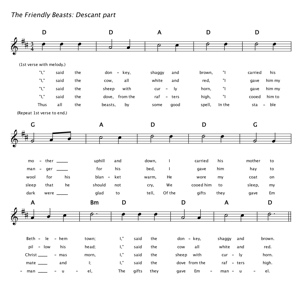I’ve been rereading Carl George’s book The Coming Church Revolution: Empowering Leaders for the Future. Carl George is a church consultant, and he is the most prominent advocate of so-called “Meta-Church,” a church organized primarily around small groups. The Coming Church Revolution is one of the books that inspired the “Small Group Ministry” movement within Unitarian Universalism.
I decided to re-read George’s book because I noticed that current Unitarian Universalist approaches to growth through the formation of small “cell groups” are simply not working. For example, the most recent issue of Interconnections, the newsletter for lay leaders published by the Unitarian Universalist Association, makes the following statement: “First Unitarian Society in Newton, MA (385 members), may have one of the best Small Group Ministry (SGM) programs around. The program began in 2001 with ninety people in nine groups. Today there are seventy-two members in eight groups.” [Link] In other words, the best small group ministry program within Unitarian Universalism is losing members, not gaining members for the congregation.
Opening George’s book at random, I happened to find myself in the middle of the chapter on worship. At this point, those accustomed to Unitarian Universalist Small Group Ministry programs are probably asking themselves what does SGM have to do with worship? Unitarian Universalists are accustomed to think of SGM as another church program, but George makes it clear that Meta-Church is not another program you add to your congregation, it is instead a different organizational model, a different way of organizing and empowering leaders in your congregation.
In the context of his overarching organizational model, George sees worship as an artistic celebration that can involve many lay people in the congregation. The Meta-Church model of organization is scaleable, that is, it can be scaled up from small churches like ours here in New Bedford, to very large (over ten thousand members) churches. Therefore, George believes that worship should involve more than just the preacher — indeed, while he respects preaching and believes it is central to worship, he also believes that preaching is not always necessary for successful worship: “I’m not preaching against preaching. I’m not even questioning the legitimacy of long sermons…. Rather, I’m affirming that there are times when… God’s message is communicated as effectively — or perhaps more effectively — by elements of the service other than preaching.” [p. 145] At the same time, Gerore asserts that his Meta-Church organizational model is “transparent to worship style” — Meta-Church will work with any worship style.
But the Meta-Church organizational model insists on empowering lots of lay people to participate in worship services, through developing the skills of lay people, bringing those artistic skills to worship services, and also out into the community. So there are Guilds in which artistic skills are cultivated and developed — guilds might include group music lessons (e.g., some choir rehearsals), a conservatory for vocal music, an acting academy, etc. Then as people develop skill and talent, they are organized into troupes — troupes might include an a capella choir, a handbell choir, a liturgical dance troupe, a sound team or video production team, etc. These troupes perform at worship services, and also out in the community (e.g., a Christmas concert at a local mall).
One of George’s most interesting bits of advice relating to empowering lay leaders seems counter-intuitive at first. When hiring staff, he does not necessarily recommend hiring staff people who are good performers themselves. Rather, he urges churches to hire producers: “Don’t hire any more music directors; you can usually get volunteer artists to do that for free. Hire worship-service and pageant producers and make sure they have an impressario flair about them; that is, do they know how to create a solid, flowing sense of worship that is put together and produced by various worship groups?” I don’t mean to anger the Unitarian Universalist Musicians Network (UUMN), but I think George is right, while the UUMN is heading in the wrong direction — we don’t need more paid musicians, nor do we need more paid music directors, but we do need producers who can facilitate and empower lay people to succeed in worship.
Of course, by now you’ve figured out some obvious things. Lay worship leaders are supported and trained by paid staff, and lay worship leaders have an outward-directed ministry that makes them feel great. Troupes of lay worship leaders can function as support groups, and troupes can draw new people into a congregation. In fact, these troupes probably do a better job of supporting individuals and promoting growth, than do the small groups of typical SGM programs. It’s an old truism that if you want to grow your church, one sure bet is to have a great choir — because great choirs make people want to come to church, great choirs attract newcomers who want to sing in the choir, and the members of great choirs provide excellent support to one another.
So there you have my thoughts after re-reading just one chapter of The Coming Church Revolution. I’d be curious to know what you think about this….

